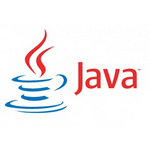js支持ocx控件的事件(event),当ocx控件定义的事件发生时,js可以捕获该事件并对事件进行相应的处理。
个人理解,其实就是事件的响应由谁来完成,OCX控件自身肯定是可以实现的,JS提供的这种机制使JS也可以完成OCX控件事件的响应。
简单举例如下:
首先在OCX控件中添加自定义事件(预定义事件同理,如鼠标点击等,没亲自试,感觉原理应该是一样的),
事件应该是属于窗口的,所以在Ctrl类上单击右键,Add->Add Event,如下图:
立即学习“Java免费学习笔记(深入)”;
在打开的对话框中输入事件名称,例如OnChange,如果需要参数,设置参数信息,点击 [ 完成 ],向导自动生成代码,如下
接下来是JS中的对事件的响应,代码如下,

java怎么学习?java怎么入门?java在哪学?java怎么学才快?不用担心,这里为大家提供了java速学教程(入门到精通),有需要的小伙伴保存下载就能学习啦!

Copyright 2014-2025 https://www.php.cn/ All Rights Reserved | php.cn | 湘ICP备2023035733号